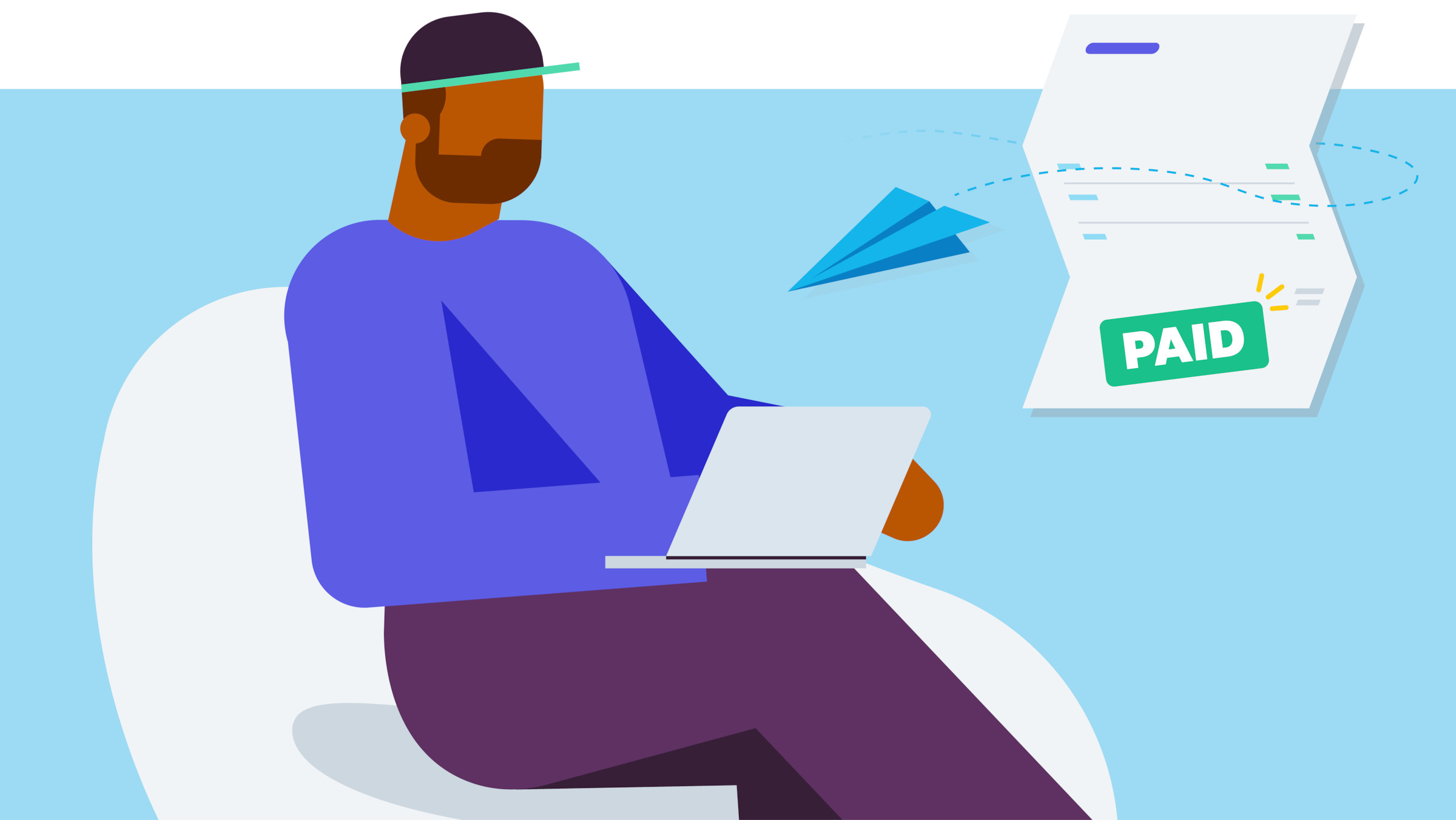How to get paid faster: tips for small businesses
Late payments strain cash flow and make it harder to stay on top of bills. Learn how to reduce late payments.

Published Tuesday 27 May 2025
Understanding late payments
Late payments occur when your clients pay after an invoice’s due date. Late invoice payments stall your cash flow, making it very difficult to stay on top of operating expenses and budget for the future.
Clients take 28–29 days to pay invoices, paying 9– 10 days late on average – check out the XSBLI stats or learn more about late payments.
Why it's important to minimize late payments
If clients don’t pay your invoices on time, you might not have the cash to cover your operating expenses, payroll, or loan payments, for example. This hurts your business and strains your relationships with suppliers [US: vendors], employees, and lenders. Timely payments keep cash flowing so you can pay your bills and set budgets.
To protect cash flow, you need to understand why people pay late and how to get paid faster.
Common causes of late payments
To reduce late payments and protect your cash flow, figure out why your clients pay late. The reasons tend to be the same across industries.
Inconsistent invoicing practices
It’s up to you to invoice or follow up with your clients on time, with the same payment terms, each time. Fail in this and it’s hard for your client to pay you.
Let’s say you forget to invoice a regular client one month, so you send two invoices the next month. It’s a small issue for you, but your client now faces a bill that's twice as much as they budgeted for.
They might delay, ask to pay by installments, or ignore the bill altogether – and look for a company that sends invoices more reliably.
Unclear payment terms
Your clients can't pay on time if they don't know what they owe or when a payment is due.
Imagine that you typically get paid on receipt, and you've set up your budget around that schedule. You’ve done the work for a new client and you send them an invoice – but without a due date. Most of the client’s suppliers offer ’Net 30’ terms, so they assume you're willing to wait 30 days to get paid. Their late payment throws out your whole budget.
Not following up on your invoice
If your clients get the impression you don't care whether or when they pay, they’re a lot less likely to pay on time. Some clients need reminders.
One such client receives an invoice but doesn’t think it's pressing – so they prioritize other expenses. The next month, the same thing happens. Soon, they've forgotten about the invoice.
Financial difficulties
Clients struggling financially tend to pay the most pressing bills and ignore the rest – including your invoice. Depending on their business or personal lives, their most important bills may be rent, utilities, key suppliers, or payroll - but not your invoice.
Often, when clients are struggling financially, they make a few late payments, but eventually, they default and don't pay at all. If you want to get paid, you need to proactively minimize this threat.
You can't tell what's happening with your client's finances - are they paying late because they forgot or didn't know the due date, or are they paying late due to financial trouble? Unfortunately, if it's the latter, you may get into a situation where you don't get paid at all. To avoid that, make sure you have clear payment terms, a consistent invoicing process, and diligent follow-up.
Disputes over goods or services
Clients don't want to pay invoices they disagree with. If they don't think you provided the goods and services on the invoice, they may pay late or not at all. To get paid on time, minimize mistakes and make sure clients understand what they're being billed for.
5 steps to reduce late payments
With these five steps as part of your invoicing strategy – and the right invoicing tools to help – you can minimize late payments and keep the cash flowing into your business.
1. Make your payment terms super clear
Your clients can only meet your expectations if they understand what you expect.
Communication is key with invoicing, so talk with your clients about your expectations up front. State your payment terms clearly on your invoices, including any consequences for late payments. In particular:
- Set out payment terms like ‘Net 60’ (due in 60 days), ‘Net 30’ (due in 30 days), or ‘Due on receipt’ clearly on the invoice
- Let clients know what types of payment methods you accept and how to pay you
- Outline fees for late payments
- Make your refund, return, and cancellation policies clear on your invoices
To encourage prompt payments, offer discounts for early payment.
Don't assume that clients agree with your terms – go over your expectations with them, preferably before you provide goods or services.
2. Invoice promptly and professionally
Late invoices lead to late payments. If you can, invoice clients immediately after (or even before) providing goods and services. Consider automating your invoices or doing your invoicing at the same time each day or week.
To speed up payments, use an invoice template or accounting software that automates invoices
3. Follow up on late payments
Follow up on late invoice payments promptly. Set up your invoicing system to automatically send reminders if invoices aren't paid on time, or set reminders on your calendar to follow up with clients.
To reduce late payments further, reach out to clients over multiple channels – for instance, use email for the first reminder and then phone calls for each reminder after that.
But don't chase late invoices forever – take further action (including legal action as a last resort) if you need to.
4. Build strong client relationships
Clients who respect you will probably pay their invoices on time, so provide clients exceptional service. To build stronger professional relationships,
- Build trust by being clear and open in your communications
- Check in with clients regularly to make sure they're happy – don't just reach out when invoices are late
- Consider loyalty programs to encourage repeat purchases and on-time payments
Here’s more about protecting your business relationships.
5. Use accounting software to track and manage invoices
Invoicing takes time, but the right tools can save you hours of work and help you get paid sooner. Invoicing software like Xero generates and sends invoices. You can also ask it to notify you about late payments and send reminders to clients automatically. Xero also has an invoice dashboard that shows you what's paid and what's outstanding – ideal for at-a-glance updates on your invoices and clients.
Reduce late payments with Xero
Xero helps minimize late invoice payments for your business. Xero’s invoicing tools, including customizable invoicing, late payment notifications, and automated reminders.
Small business continues to adapt and grow*
Read the full report for Xero's small business insights focusing on several core performance metrics, including sales growth, jobs, time to be paid, and late payments.
AU sales:+3.7%*
Small business sales grew an average 3.7% y/y in the three months to September. Published 31 October 2024.

Disclaimer
Xero does not provide accounting, tax, business or legal advice. This guide has been provided for information purposes only. You should consult your own professional advisors for advice directly relating to your business or before taking action in relation to any of the content provided.